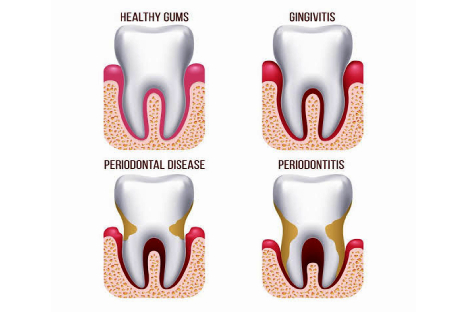
GINGIVITIS
This is the first stage of gum disease, caused due to the plaque
build-up on gums. If the plaque is not gone after brushing and flossing,
then it can cause irritation. In this stage, you will notice your gums
bleeding while brushing and flossing. Because bone is not affected in
this stage, the chances of recovery are quite high.
PERIODONTITIS
Gingivitis if not treated on time, can lead to Periodontitis.
Treatment Includes
The Non-Surgical Options Include : Deep Cleaning
This is done in the very initial stage of developing a Gum Disease. Your
dentist will remove the plaque or tartar (which hardens the tooth
surface) from below and above the gum line. It is a preventive measure
which helps you to save from getting gum disease.
Scaling & Root Planning
This is also a deep cleaning process. The only difference is that your
dentist will give local anesthesia to start the process. Plaque and
tartar are removed from above and below the gum line and after that, the
rough spots are made smooth. The process of smoothing helps to remove
the bacteria. This is done only if your dentist finds that you have
calculus deposits under the gum.
Surgical Treatment Includes : Flap Surgery
In this, incision is made on the gums to remove the tartar. Sometimes
the irregular surface of the bone is smoothened so that there are no
areas for bacteria which cause this disease can hide. This method is
used to remove the gap between gums and tooth.
Bone Graft
This method is used to regenerate the bone. The dentist use fragments of
synthetic bone donated bone or your own bone which is used to replace
the bone destroyed due to gum disease.
Soft Tissue Graft
This method is used if the gums are receded. Gums are taken from the
roof of the mouth and is stitched to the area of gum recession.
